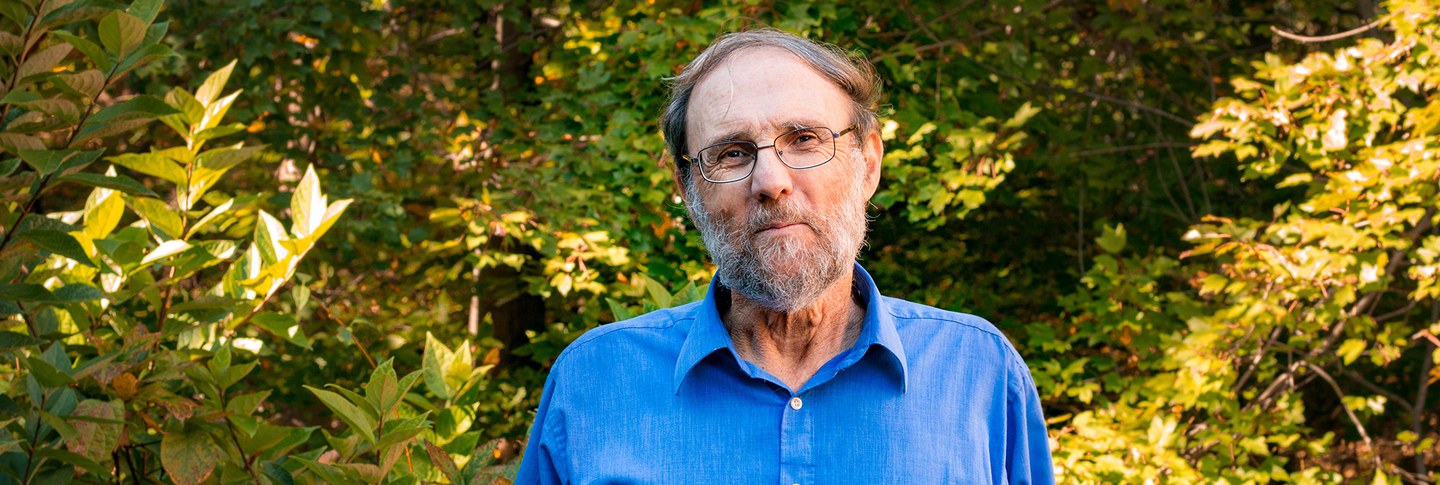Gideon Avni, the head of the Archaeological Division in the Israel Antiquities Authority and a lecturer at the Institute of Archaeology at the Hebrew University of Jerusalem, is a fellow in Byzantine Studies. On October 30, he delivered his research report, “The Creation of a Multicultural City—Jerusalem and the Church of the Holy Sepulcher in the 4th–11th Centuries,” which considered the urban context of recent archaeological research.
Q&A with Gideon Avni
How does the Islamic center you mentioned develop around Haram al-Sharif, the Temple Mount?
It’s actually kind of a political decision. Following the Arab conquest, the first thing to do was stabilize the new Islamic government. They had to choose how to deal with the previous centers of power, meaning the religious center, which was of course Jerusalem, and the secular center, which was Caesarea. With Caesarea, they immediately transferred the center of administrative and political power. In Jerusalem, it was much more complicated, because it was a very strong Christian center—it was the main pilgrimage destination in the country, and drew interest from all over the Byzantine world. But at the same time, in the Quran, there are traditions linking the Old Testament to Islam, like the appreciation of the prophets, from Abraham onwards, and then early stories and legends about Muhammad traveling from Mecca to Jerusalem in one night, and his ascent to heaven from the old Jewish Temple Mount.
The Umayyad caliphs were the first to develop Jerusalem. The idea was first of all to create a religious center exactly on the location of the previous Jewish temple. A small and modest mosque was built there as early as ten years after the conquest, and then at the end of the 7th century, the monumental construction began—the Dome of the Rock. In conjunction with this, they build administrative centers around the Haram al-Sharif, these four massive buildings that are modeled on the so-called Umayyad castles or palaces found in the desert of Jordan. And that is the declaration, both religious and political, that the Islamic regime is looking at Jerusalem as a center. Of course, Mecca eventually took the lead, and the place of Jerusalem declined following the Umayyad dynasty, but the administrative and religious center continued to function. These buildings were only abandoned in the early to mid-11th century.
How are catastrophes and large-scale devastation helpful to archaeologists, when it might seem they’d make your work more difficult?
Well, there’s a saying, “archaeologists, more than anything, love destruction.” Whenever you face destruction, it can actually give you material evidence for everything that was there before. Whenever you burn a building or there’s a big war that destroys the whole city, archaeologists rejoice, because they have an event—they have site destruction that has preserved everything beneath the debris. The same goes for earthquakes and other natural events—the most well-known example is Pompeii, where the entire city and its population is preserved beneath volcanic ash.
This isn’t a rule, of course. Not every conquest is accompanied by large-scale destruction. Jerusalem was almost completely destroyed only twice, once in 586 BCE, and once in 70 CE with the Roman conquest. Most other political regime changes were hardly felt in the city over the long term.
You described how over time the Jewish community becomes more visible in Jerusalem, and you begin to see symbols cropping up. What are some of these symbols?
First of all: language, the use of Hebrew, which was totally nonexistent before. Whenever there was a Jewish community in other parts of the country in the diaspora, they used Hebrew, if not for their daily needs, then for burials and inscriptions. So you start finding these inscriptions, and then there is very clear Jewish symbolism, like the menorah and other symbols, that begins to appear in mosaic form, for instance. And of course, all of this is reflected in historical documents—letters sent from Egypt to Jerusalem, for instance, that mention issues of Jewish land ownership, and Jews donating money for the construction of a synagogue in the city. All these factors come together and contribute to this urban map showing a renewed Jewish presence.

